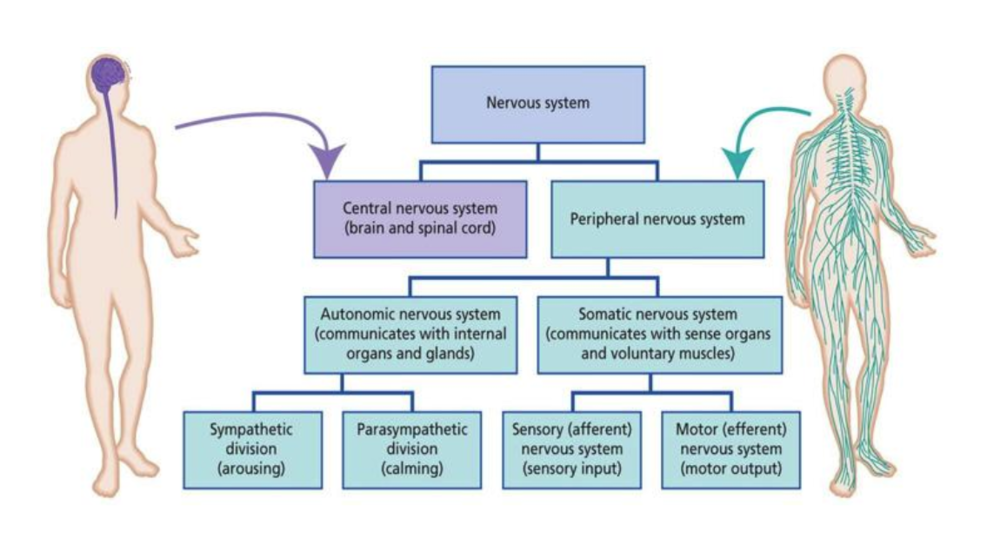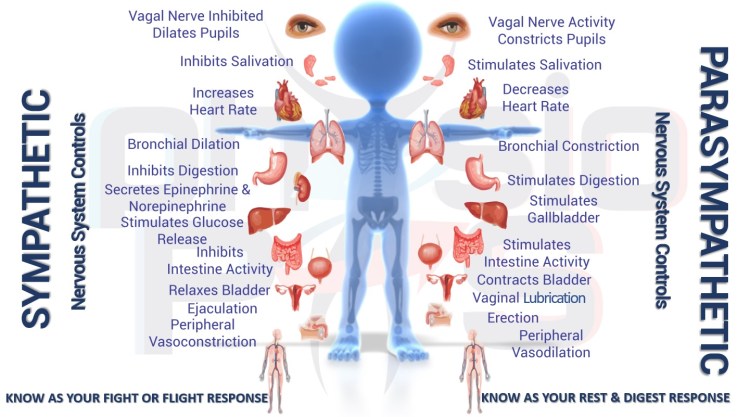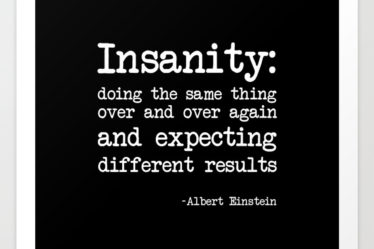
In Part 1 of this series, we took a look at reasons why someone would want to begin a mindfulness practice. If you haven’t read the first post, I would suggest starting there (WHY cultivate a mindfulness practice). In part 2, we are taking a deep dive into anatomy and physiology to help get a better understanding of HOW sitting in stillness and focusing on the breath for a few minutes can be so helpful. Forgive me here, I’m going to have to get a little sciency, but I hope the pictures help and that my explanation is clear.
THE NERVOUS SYSTEM:
We’ve all heard about the nervous system in our bodies. It includes the brain, the spinal cord, and countless nerves traveling to all the organs and muscles and blood vessels telling them what to do. The nerves are the communication system sending messages from the brain to the body and from the body to the brain (output and input).

There is the central nervous system (brain, and spinal cord) and the peripheral nervous system (all the nerves sending and receiving messages to and from the rest of the body systems). The peripheral nervous system can be broken down into voluntary and involuntary nerves. Your muscles for instance are controlled by the voluntary nerves — you control how you move your arms and legs around. The involuntary nerves communicate with your organs and glands and this is largely beyond your control. You don’t have to tell your heart to beat or your stomach to start digesting the food that you eat. THIS is the part of the nervous system that we are interested in here. It’s called the autonomic nervous system and as the name suggests it’s automatic. It doesn’t require conscious effort on your part.
THE AUTONOMIC NERVOUS SYSTEM: “Rest and Digest” and “Fight or Flight”
Now, the autonomic nervous system can also be broken down into two parts that work with each other. Kind of a yin and yang. It has the “fight or flight” nerves and the “rest and digest” nerves. One of the key nerves affecting the “rest and digest” stimulation is the Vagus nerve. In the image below it’s the third/bottom “purple” nerve at the base of the skull. This image is great because you can see that this one (large) nerve affects SO many organs (heart, lungs, stomach, liver, and intestines).

I know by now you are thinking, great, thanks for the science lesson, but what’s the point?
Here’s the thing, by working with my breath (lungs), I am training my nervous system and stimulating my vagus nerve (Vagus Nerve and Yoga) which is a key player in the “rest and digest” part of my nervous system (the parasympathetic nervous system). If my vagus nerve senses slow steady, calm breaths, it tells my brain and the rest of my body that everything is okay and that the “fight or flight” part of my nervous system (sympathetic nervous system) can chill out. It tells every part of my body to calm down and relax.

Okay. So what’s the big deal?
Remember back to what I said before. These two parts of the nervous system (sympathetic and parasympathetic) make up the autonomic nervous system, the one that controls functions in the body that happen automatically. Things like your heart rate, blood pressure, digestion and elimination — bodily functions that are necessary for living that you have no conscious control over.
Except for, you guessed it, the breath! You CAN control your breath and play a conscious part in the autonomic nervous system. Your breath is the way to access and control involuntary responses to “negative stimuli.” Yes, there are factors going on in your body that keep you breathing without you thinking about it — how else could we sleep? BUT when we do take a few moments to become aware of our breath we can CHOOSE to alter the natural patterns and tendencies. We can choose to hold our breath, in or out. We can choose to shorten or lengthen the inhale. We can choose to shorten or lengthen the exhale. And when we do these things with purpose and intention, when we follow a rhythm and pattern designed to help find a sense of calm, we are stimulating our vagus nerve. We are training our nervous system. We are teaching it a new pattern and a new tendency and a new normal. And this is how we tell our brains to tell our bodies that we are okay. To relax. To build resiliency. This is how the breath, the mind, and the body are all connected. All one.
Power in Breath!
Phew. Did you make it this far?? I hope so. And I hope you’ll stick around for one last example to show how powerful the mind body connection is. I know that we’ve been focused on mindfulness practices, but (as you’ll see in next week’s post) you don’t have to be sitting in stillness to harness the power of the breath to help you calm down.
Let’s take a quick look at backbends as an example. Backbends take a lot of strength and a lot of flexibility. They also happen to be pretty energizing, and for some people, maybe even a little bit scary. Why? Because they stimulate your flight or fight response. Go back to the picture above and check out the nerves responsible for the flight or flight response (parasympathetic nerves). Pay close attention to the “green” nerves that come from your spinal cord and send signals to your eyes, heart, lungs, stomach, intestines, and stimulate the secretion of epinephrine (i.e. adrenaline). When your body is in a deep backbend you are literally stimulating all the nerves in your spine that tell the rest of your body to fight or run away.
Ever had that experience in a deep backbend — did your brain tell you to get out of that posture as quickly as possible?? I have. 100%. I practice a lot of deep backbends on a regular basis (hello kapotasana, I see you there). If I have deep backbends planned for an upcoming practice my brain will literally start to talk me out of doing it before I even begin the session. Sometimes the day before the session! I literally try to rationalize why I should do something else on that day and move the scary practice further into the future. Oh the power of the mind and the stories we tell ourselves.
So, why would we do these postures again and again and again if they are so scary? Why is there some version of a backbend in pretty much every American yoga (asana) class you will ever take? Becuase they are an opportunity to find your breath. Lengthen the inhales, slow them down, stimulate that vagus nerve to tell your mind and the rest of your body that it’s okay. Backbends shouldn’t be painful, and aren’t inherently dangerous when done properly. Your nervous system is telling you a different story, every time. It gets the signal from the nerves in your low back that the sensations you are feeling aren’t safe. But, while you are in that pose, it’s an opportunity to take control of that fear response. To harness the power of your breath and tell your brain that everything is okay. If you do it enough times, eventually you go deeper. The nice, slow, steady breaths come more easily. You’ve trained your mind and your body how to respond to a difficult situation and you can take that lesson off the mat and into the rest of your day. The rest of your life.


